
The Majestic High Tatras National Park
Explore the untouched beauty of Slovakia's High Tatras National Park, a haven for hikers, skiers, and nature enthusiasts, with its stunning peaks, serene lakes, and rich wildlife.
High Tatras National Park, nestled in the heart of Slovakia, is a paradise for nature lovers and adventure seekers. This stunning park is part of the Carpathian mountain range and offers breathtaking views, serene lakes, and diverse wildlife. The park's towering peaks, some of which reach over 2,500 meters, provide a dramatic backdrop for any outdoor activity. Visitors can enjoy a variety of activities including hiking, skiing, and mountaineering. Well-marked trails lead to picturesque spots like the glacial Štrbské Pleso lake and the cascading waterfalls of Studený potok. The park is home to several endemic species, such as the Tatra chamois and marmot, making it a fantastic destination for wildlife enthusiasts. In addition to its natural beauty, the High Tatras also offer cultural experiences. Charming mountain villages such as Tatranská Lomnica and Starý Smokovec provide a glimpse into local traditions and cuisine. Whether you're looking to scale high peaks or relax in a tranquil setting, High Tatras National Park has something for everyone.
Local tips in High Tatras National Park
- Visit in late spring or early autumn to avoid the peak tourist season and enjoy milder weather.
- Bring sturdy hiking boots and layered clothing as weather conditions can change rapidly in the mountains.
- Purchase a map from local tourist information centers to help navigate the numerous trails.
- Try traditional Slovak dishes such as bryndzové halušky (potato dumplings with sheep cheese) in local mountain huts.
- Consider staying in one of the park's charming mountain chalets for an authentic experience.
The Majestic High Tatras National Park
High Tatras National Park, nestled in the heart of Slovakia, is a paradise for nature lovers and adventure seekers. This stunning park is part of the Carpathian mountain range and offers breathtaking views, serene lakes, and diverse wildlife. The park's towering peaks, some of which reach over 2,500 meters, provide a dramatic backdrop for any outdoor activity. Visitors can enjoy a variety of activities including hiking, skiing, and mountaineering. Well-marked trails lead to picturesque spots like the glacial Štrbské Pleso lake and the cascading waterfalls of Studený potok. The park is home to several endemic species, such as the Tatra chamois and marmot, making it a fantastic destination for wildlife enthusiasts. In addition to its natural beauty, the High Tatras also offer cultural experiences. Charming mountain villages such as Tatranská Lomnica and Starý Smokovec provide a glimpse into local traditions and cuisine. Whether you're looking to scale high peaks or relax in a tranquil setting, High Tatras National Park has something for everyone.
When is the best time to go to High Tatras National Park?
Iconic landmarks you can’t miss
Vysoké Tatry - Hrebienok
Explore Vysoké Tatry - Hrebienok, Slovakia's stunning hiking haven with breathtaking views and rich wildlife, perfect for outdoor adventures.
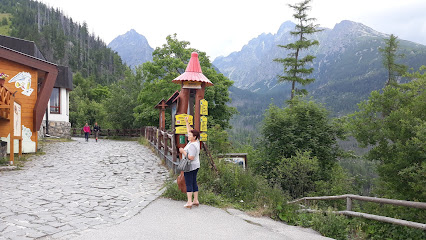
Low Tatras National Park
Experience breathtaking mountain views and diverse wildlife at Low Tatras National Park, a perfect escape for nature lovers and adventure seekers in Slovakia.

Tatra National Park, Poland
Explore Tatra National Park in Poland, a stunning hiking area with breathtaking landscapes, diverse wildlife, and rich cultural heritage.

Slovak Paradise National Park
Explore the breathtaking beauty of Slovak Paradise National Park, a natural wonderland filled with stunning landscapes, adventure, and unique wildlife.

Belianska Cave
Discover the enchanting Belianska Cave in the heart of the High Tatras, a mesmerizing adventure filled with stunning geological formations.

Tricklandia
Discover the magic of Tricklandia, where art meets interactive fun in the stunning backdrop of Vysoké Tatry-Starý Smokovec.
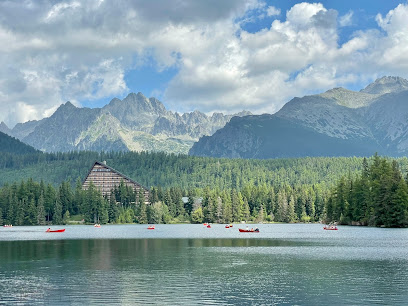
Siklawica Waterfall
Experience the breathtaking Siklawica Waterfall in Zakopane, where stunning natural beauty meets adventure in the heart of the Tatra Mountains.

Skok Waterfall
Explore the breathtaking Skok Waterfall in Vysoké Tatry, a stunning natural wonder perfect for hiking and immersing in Slovakia's scenic beauty.

Five Polish Ponds Valley
Discover the breathtaking beauty of Five Polish Ponds Valley in Bukowina Tatrzańska, a serene park with crystal-clear ponds and stunning mountain views.

Štrbské Pleso
Explore the stunning Štrbské Pleso, a breathtaking glacial lake in the High Tatras, perfect for outdoor adventures and serene escapes.

Slavkovská dolina
Explore the serene landscapes of Slavkovská dolina, a stunning nature preserve in Slovakia's High Tatras, perfect for outdoor adventures and wildlife spotting.

The Silent Valley
Explore the serene beauty of The Silent Valley, a nature preserve in Slovakia, perfect for hiking, wildlife watching, and tranquil escapes into nature.

Ľadový Dóm
Experience the breathtaking beauty of Ľadový Dóm, a natural ice cathedral in the heart of Vysoké Tatry, Slovakia.

Tatra National Park
Discover the enchanting Tatra National Park, Slovakia's breathtaking natural gem filled with stunning landscapes, diverse wildlife, and outdoor adventures.

Kôprová dolina
Explore Kôprová dolina, a breathtaking nature preserve in Slovakia, perfect for hiking, wildlife spotting, and enjoying stunning landscapes year-round.

Unmissable attractions to see
Low Tatras National Park
Explore the breathtaking landscapes of Low Tatras National Park, Slovakia's natural paradise for outdoor adventures and wildlife encounters.

Tatra National Park, Poland
Experience the breathtaking beauty and adventure of Tatra National Park, a natural marvel in Poland, perfect for hiking and wildlife observation.
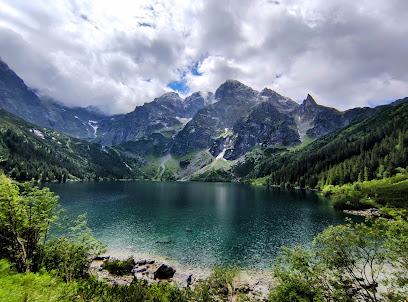
Czorsztyn Castle
Explore the historical majesty of Czorsztyn Castle, a captivating landmark surrounded by stunning landscapes and rich cultural heritage.
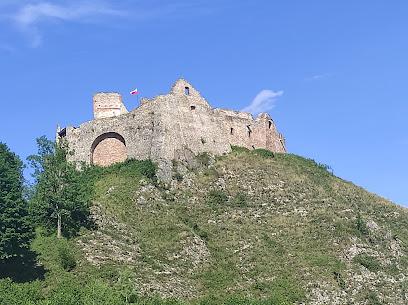
Jasna Low Tatras
Experience the breathtaking beauty of Jasna Low Tatras, Slovakia's premier ski resort and year-round adventure destination in the heart of the Low Tatras.

Spływ Dunajcem - Początek
Experience the breathtaking beauty of the Pieniny Mountains while rafting down the iconic Dunajec River at Spływ Dunajcem - Poczatek.
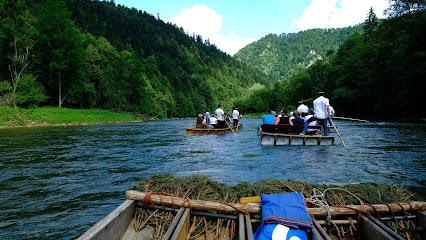
Morskie Oko
Discover the enchanting Morskie Oko, a stunning glacial lake in the Tatra Mountains, perfect for hiking, relaxation, and breathtaking views.

Muzeum Oscypka
Explore the heritage of cheese-making at Muzeum Oscypka in Zakopane, where tradition meets taste in a delightful cultural experience.

Kościeliska Valley
Experience the breathtaking beauty of Kościeliska Valley in the Tatra Mountains, where nature and culture intertwine for an unforgettable journey.

PORT PIENIN - Canoeing and Pontoon Rafting | Rafting on the Dunajec
Discover the thrill of canoeing and rafting at Port Pienin, a must-visit destination for water sports enthusiasts in Szczawnica, Poland.

Czarny Staw under Rysy
Explore the breathtaking beauty of Czarny Staw under Rysy, an alpine paradise in the Tatra Mountains, perfect for nature lovers and adventure seekers.
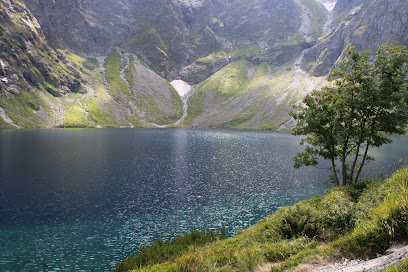
Dunajec Rafting
Discover the breathtaking beauty of the Pieniny Mountains while enjoying an exhilarating rafting experience on the Dunajec River.

Spływ Dunajcem - Biuro spływu
Discover the breathtaking beauty of the Dunajec River and Pieniny Mountains at Spływ Dunajcem, an unforgettable rafting adventure in Poland.

The Tatra Museum
Unlock the secrets of Tatra heritage at The Tatra Museum in Zakopane, where history and culture converge amidst stunning mountain landscapes.

Skalnaté pleso
Experience the breathtaking beauty of Skalnaté Pleso, a stunning hiking area in the Vysoké Tatry mountains, perfect for nature lovers and adventurers.

Spływ Dunajcem - Przystań pod Zamkiem
Experience the breathtaking rafting adventures at Spływ Dunajcem - Przystań pod Zamkiem, where stunning landscapes meet thrilling watersport activities.

Essential places to dine
Salaš Zbojská - Zbojnícky dvor
Experience authentic Slovak cuisine in a cozy atmosphere at Salaš Zbojská - Zbojnícky Dvor, Tisovec's culinary treasure.
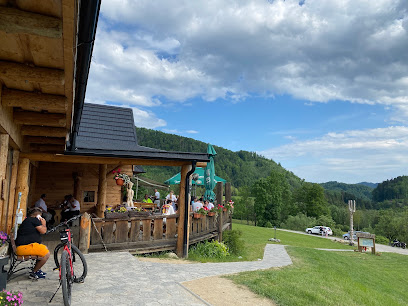
Koliba Žerucha
Discover authentic Slovak cuisine at Koliba Žerucha in Tatranská Štrba, where tradition meets stunning mountain views.

Koliba Bystrina
Experience authentic Slovakian cuisine at Koliba Bystrina in Demänovská Dolina - where tradition meets breathtaking scenery.

Humno Tatry
Discover authentic Slovak cuisine paired with vibrant nightlife at Humno Tatry in Tatranská Lomnica - where great food meets great fun.

Koliba Holica
Discover Koliba Holica: A cozy restaurant and bed & breakfast serving authentic Slovak cuisine amidst stunning nature.
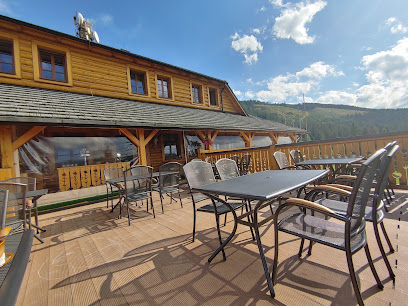
Penzion a Restaurant Koliba
Experience the flavors of Slovakia at Penzion a Restaurant Koliba—where traditional cuisine meets breathtaking mountain views.

Furkotka
Discover Furkotka: A delightful guest house with traditional Slovak cuisine nestled in Vysoké Tatry's breathtaking landscapes.

Grand Hotel Kempinski High Tatras
Discover unparalleled luxury and breathtaking nature at Grand Hotel Kempinski High Tatras - your perfect escape in Slovakia.

Koliba Patria
Discover authentic Slovak cuisine at Koliba Patria while enjoying stunning mountain views in Vysoké Tatry.

Mountain hotel Popradské pleso
Discover tranquility at Mountain Hotel Popradské Pleso—your gateway to adventure in Slovakia's breathtaking High Tatras.

Nosalowy Dwór
Discover the essence of Polish cuisine at Nosalowy Dwór in Zakopane - a culinary gem offering traditional dishes and breathtaking mountain views.

Slnečný dom
Discover comfort at Slnečný dom in Tatranská Lomnica – where stunning views meet warm hospitality and delicious cuisine.

Ostredok by Iglobrothers
Discover the culinary treasures of Slovakia at Ostredok by Iglobrothers in Demänovská Dolina, where every meal offers breathtaking views and authentic flavors.

Hotel and Restaurant Drak
Experience authentic Slovak cuisine at Hotel and Restaurant Drak amidst breathtaking landscapes in Liptovský Mikuláš.

Reštaurácia Stodola
Experience authentic Slovak cuisine at Reštaurácia Stodola in Vysoké Tatry—where every meal tells a story.
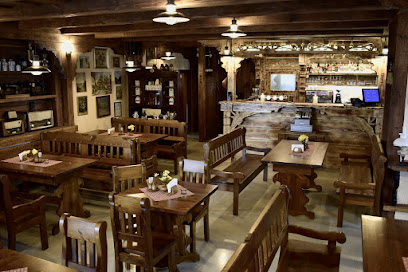
Markets, malls and hidden boutiques
Vysoké Tatry - Hrebienok
Discover the stunning Hrebienok area in Vysoké Tatry, offering breathtaking views and unforgettable hiking experiences amidst Slovakia's natural beauty.

Low Tatras National Park
Explore the stunning Low Tatras National Park, a paradise of mountains, hiking trails, and caves in Slovakia, ideal for outdoor adventures and nature lovers.
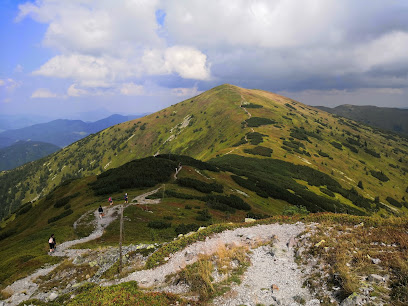
Zamkovskeho chalet
Experience the serenity of nature at Zamkovskeho Chalet, your perfect mountain retreat in the heart of Vysoké Tatry.

Tatra Mountains
Explore the breathtaking Tatra Mountains, a paradise for adventurers and nature lovers with stunning landscapes and diverse wildlife.

Téry cottage
Discover Téry Cottage, a serene mountain retreat in the breathtaking High Tatras, perfect for hiking, nature, and traditional Slovak cuisine.

Slavkovská dolina
Explore the breathtaking landscapes and rich biodiversity of Slavkovská dolina, a stunning nature preserve in the High Tatras of Slovakia.

The Silent Valley
Discover the serene landscapes and vibrant biodiversity of The Silent Valley, Slovakia's enchanting nature preserve.

Museum of TANAP
Discover the natural and cultural treasures of the Tatra Mountains at the Museum of TANAP in Tatranská Lomnica.

Tatra National Park
Discover the breathtaking beauty and adventure of Tatra National Park, a natural wonderland in Slovakia known for its stunning landscapes and rich biodiversity.
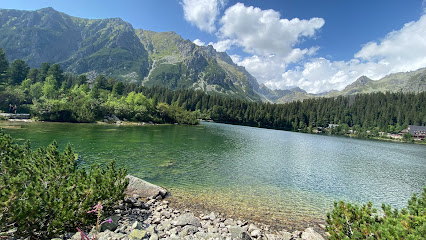
Shopping Centrum Nicolaus TATRASPOL SLOVAKIA, s.r.o.
Discover Shopping Centrum Nicolaus: Liptovský Mikuláš's vibrant shopping hub with diverse stores, dining options, and a lively atmosphere.

Ski Museum
Explore the Ski Museum in Tatranská Lomnica and discover the rich history of skiing in the stunning High Tatras region.
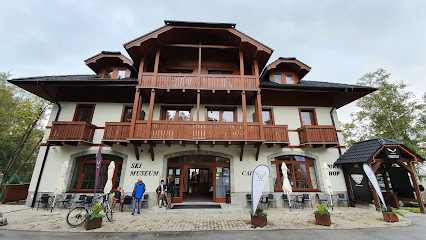
High Tatras
Experience the breathtaking beauty of the High Tatras, Slovakia's premier destination for hiking, skiing, and unforgettable alpine adventures.

Authentic Slovak Shop - Autentyczny Sklep Słowacki
Explore the Authentic Slovak Shop in Łysa Polana for a true taste of Slovak culture, featuring local delicacies and unique regional products.

Tatry vnútri
Explore the vibrant art scene and unique souvenirs of Vysoké Tatry at Tatry vnútri, a must-visit gallery and cultural hub.

Maxi suvenir plus
Discover unique Slovakian souvenirs and local crafts at Maxi Suvenir Plus, your ultimate shopping destination in Vysoké Tatry.

Essential bars & hidden hideouts
Penzion a Restaurant Koliba
Experience authentic Slovak cuisine and warm hospitality at Penzion a Restaurant Koliba in the stunning Vysoké Tatry mountains.

Furkotka
Experience the serene beauty of Vysoké Tatry at Furkotka, where comfort meets adventure in the heart of nature.

Koliba Patria
Savor the rich flavors of Slovakia at Koliba Patria, a charming restaurant surrounded by the stunning beauty of the Vysoké Tatry mountains.
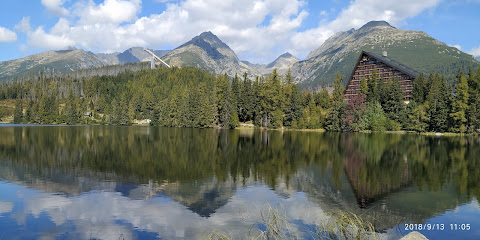
Slavkovská dolina
Explore the serene landscapes and rich biodiversity of Slavkovská dolina, a premier nature preserve in the High Tatras.

Ski Museum
Explore the Ski Museum in Tatranská Lomnica, a unique attraction celebrating the rich history of skiing amidst breathtaking mountain scenery.

High Tatras
Explore the breathtaking High Tatras, a UNESCO Biosphere Reserve, offering stunning landscapes, diverse wildlife, and thrilling outdoor adventures in every season.

Tálska Bašta
Experience the finest Slovak cuisine in a picturesque setting at Tálska Bašta, where local flavors meet exceptional service.

Tatra National Park
Explore the breathtaking beauty of Tatra National Park, a natural treasure in Slovakia, offering stunning landscapes and adventure for all.

TATRALINE BAR & COFFEE
Experience the cozy charm of TATRALINE BAR & COFFEE in Liptovský Mikuláš, where delightful drinks and a warm atmosphere await every traveler.

Local Phrases about High Tatras National Park
-
- HelloAhoj
[ahoy] - GoodbyeDovidenia
[doh-vee-deh-nyah] - YesÁno
[ah-noh] - NoNie
[nye] - Please/You're welcomeProsím
[pro-seem] - Thank youĎakujem
[dya-koo-yem] - Excuse me/SorryPrepáčte
[pre-pah-chte] - How are you?Ako sa máš?
[ah-ko sa mahsh] - Fine. And you?Dobre. A ty?
[doh-bre. ah tee] - Do you speak English?Hovoríte po anglicky?
[ho-vo-ree-teh poh ahng-leet-skee] - I don't understandNerozumiem
[neh-roh-zoo-mee-em]
- HelloAhoj
-
- I'd like to see the menu, pleaseChcel by som vidieť jedálny lístok, prosím
[kh-tsel bee som vee-dee-yeht ye-dahl-nee lees-tok pro-seem] - I don't eat meatNejem mäso
[neh-yem mah-soh] - Cheers!Na zdravie!
[nah zdrah-vee-eh] - I would like to pay, pleaseChcel by som zaplatiť, prosím
[kh-tsel bee som zah-pla-teet pro-seem]
- I'd like to see the menu, pleaseChcel by som vidieť jedálny lístok, prosím
-
- Help!Pomoc!
[po-moats] - Go away!Choď preč!
[khoid prech] - Call the Police!Volajte políciu!
[vo-lah-yteh poh-lee-tsyoo] - Call a doctor!Volajte doktora!
[vo-lah-yteh dok-toh-rah] - I'm lostStratil som sa
[strah-teel som sa] - I'm illSom chorý
[som kho-ree]
- Help!Pomoc!
-
- I'd like to buy...Chcel by som kúpiť...
[kh-tsel bee som koo-peet] - I'm just lookingLen sa pozerám
[len sa po-ze-rahm] - How much is it?Koľko to stojí?
[kol-ko toh stoh-yee] - That's too expensiveTo je príliš drahé
[toh yeh pree-lish dra-heh] - Can you lower the price?Viete znížiť cenu?
[vyeh-teh znee-zheet tseh-noo]
- I'd like to buy...Chcel by som kúpiť...
-
- What time is it?Koľko je hodín?
[kol-ko yeh hod-een] - It's one o'clockJe jedna hodina
[yeh yed-nah hod-een-ah] - Half past (10)Pol hodiny (10)
[pol hod-ee-nee des-yaht] - MorningRáno
[rah-noh] - AfternoonPopoludní
[poh-po-loohd-nee] - EveningVečer
[veh-cher] - YesterdayVčera
[v-cheh-rah] - TodayDnes
[dnes] - TomorrowZajtra
[zai-trah] - 1Jedna
[yed-nah] - 2Dve
[dveh] - 3Tri
[tree] - 4Štyri
[sh-teer-ee] - 5Päť
[pate] - 6Šesť
[shesht] - 7Sedem
[seh-dem] - 8Osem
[oh-sem] - 9Deväť
[de-vaht] - 10Desať
[des-aht]
- What time is it?Koľko je hodín?
-
- Where's a/the...?Kde je...
[kde yeh] - What's the address?Aká je adresa?
[ah-kah yeh ah-dreh-sah] - Can you show me (on the map)?Viete mi to ukázať (na mape)?
[vyeh-teh mee toh oo-kah-zaht nah mah-peh] - When's the next (bus)?Kedy je ďalší (autobus)?
[keh-dee yeh dyaal-shee ow-toh-boos] - A ticket (to ....)Lístok (do ...)
[lees-tok doh]
- Where's a/the...?Kde je...
History of High Tatras National Park
-
The High Tatras, part of the Carpathian mountain range, were formed over 250 million years ago during the Paleozoic Era. The region's dramatic peaks and valleys were shaped by glacial activity during the last Ice Age, creating the stunning landscapes we see today. This geological history has endowed the High Tatras with a unique topography that attracts geologists and tourists alike.
-
Archaeological evidence suggests that the High Tatras were first inhabited by ancient tribes thousands of years ago. During the medieval period, the area saw the establishment of small settlements. These communities were primarily involved in agriculture, hunting, and later, mining. The remnants of these early settlements provide valuable insights into the region's early history and culture.
-
Juraj Jánošík, often referred to as the Slovak Robin Hood, is a legendary figure in the folklore of the High Tatras. Born in the late 17th century, Jánošík is said to have roamed the mountains, robbing from the rich and giving to the poor. His legacy is celebrated in Slovak culture, and numerous tales and ballads recount his adventures in the High Tatras.
-
The 19th century saw the beginning of organized tourism in the High Tatras. The first tourist paths were established, and mountain huts were built to accommodate visitors. Notable figures, such as the Hungarian physician Miklós Szontagh, played a crucial role in promoting the therapeutic benefits of the mountain air, leading to the development of health resorts in the region.
-
High Tatras National Park (TANAP) was established in 1949, making it the oldest national park in Slovakia. The park was created to preserve the unique natural environment and biodiversity of the High Tatras. TANAP covers an area of approximately 738 square kilometers and is home to diverse flora and fauna, including endangered species such as the Tatra chamois and the Eurasian lynx.
-
During World War II, the High Tatras served as a strategic location for both Axis and Allied forces. The rugged terrain provided a natural fortress for resistance fighters and partisans. Several battles and skirmishes took place in the region, leaving behind historical sites and memorials that commemorate the bravery and sacrifices of those who fought in the mountains.
-
In recent decades, significant efforts have been made to conserve the High Tatras’ natural beauty and biodiversity. Various initiatives have been launched to combat the effects of climate change, pollution, and over-tourism. These conservation efforts are crucial for maintaining the ecological balance of the region and ensuring that future generations can continue to enjoy the pristine landscapes of the High Tatras.
High Tatras National Park Essentials
-
High Tatras National Park is located in northern Slovakia, near the border with Poland. The nearest international airport is Poprad-Tatry Airport, approximately 20 kilometers away. Alternatively, you can fly into Kosice International Airport, about 120 kilometers to the east, or Krakow Airport in Poland, around 150 kilometers to the north. From these airports, you can take a bus, train, or rent a car to reach the High Tatras. Trains from Bratislava and Kosice run frequently to Poprad, from where you can catch a local train to the High Tatras region.
-
Once in the High Tatras, you have various transportation options. The Tatra Electric Railway (TEZ) connects key locations like Poprad, Stary Smokovec, and Strbske Pleso, providing an efficient way to get around. Local buses also serve the area and are a convenient option for reaching trailheads and attractions. Taxis are available but can be more expensive. Renting a car is a good option if you plan to explore the surrounding areas at your own pace.
-
The official currency in Slovakia is the Euro (EUR). Credit and debit cards are widely accepted in hotels, restaurants, and larger shops, but it's advisable to carry some cash for smaller establishments and rural areas. ATMs are readily available in towns like Poprad and in key tourist areas within the High Tatras. Ensure you have enough cash for activities like hiking and visiting remote attractions.
-
High Tatras National Park is generally a safe destination for tourists. However, standard precautions should be taken, such as not leaving valuables unattended and being cautious when hiking in remote areas. Crime rates targeting tourists are low, but it's always best to stay vigilant. Avoid hiking alone and always inform someone about your plans. Be aware of weather conditions, as they can change rapidly in mountainous areas.
-
In case of emergency, dial 112 for immediate assistance. Medical facilities are available in Poprad and other larger towns in the region. It is advisable to have travel insurance that covers medical emergencies and outdoor activities like hiking. For minor health issues, pharmacies are available in most towns where you can purchase over-the-counter medications.
-
Fashion: Do wear appropriate hiking gear, including sturdy boots and weather-appropriate clothing. Avoid wearing flashy or revealing clothing, especially in rural areas. Religion: Do respect local customs and traditions. When visiting churches or religious sites, dress modestly and behave respectfully. Public Transport: Do be respectful and give up your seat to elderly passengers. Don’t eat or drink on public transport. Greetings: Do greet people with a friendly 'Dobrý deň' (Good day) or 'Ahoj' (Hello). A handshake is a common form of greeting. Eating & Drinking: Do try local Slovak dishes and accept food offerings graciously. Don’t refuse hospitality, as it is considered impolite.
-
To experience the High Tatras like a local, visit the local markets where you can buy fresh produce and traditional Slovak goods. Engage with locals, as they are often friendly and willing to share stories about the region’s history and culture. Don’t miss hiking the trails, especially the ones leading to scenic lakes like Strbske Pleso and Skalnate Pleso. For a unique experience, take the cable car up to Lomnicky Peak for breathtaking views.
Trending Landmarks in High Tatras National Park
Nearby Cities to High Tatras National Park
-
Things To Do in Zakopane
-
Things To Do in Prešov
-
Things To Do in Košice
-
Things To Do in Banská Bystrica
-
Things To Do in Martin
-
Things To Do in Krakow
-
Things To Do in Žilina
-
Things To Do in Tarnow
-
Things To Do in Bielsko-Biala
-
Things To Do in Salgotarjan
-
Things To Do in Miskolc
-
Things To Do in Eger
-
Things To Do in Uzhhorod
-
Things To Do in Ostrava
-
Things To Do in Trenčín













